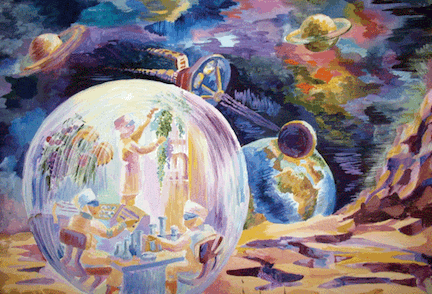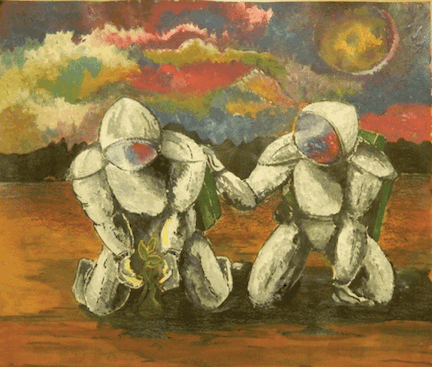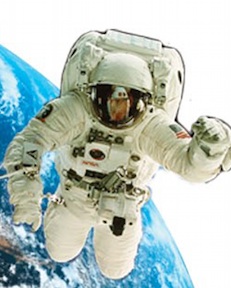By Kristy Ju
One giant leap for mankind started with one small step on the Moon. Jancy Mcphee (ΦBK, Cornell University, 1981), of Universities Space Research Association (USRA), makes another giant leap for the future of space exploration as the director of the Humans in Space Art Program.
The Program is comprised of three projects that engage the global community to “be inspired, be creative, and be heard,” through a joint collaboration with NASA’s International Space Station Program and other partners.
“Humans in Space Art aims to foster a globally-connected community that uses the art of imaginative story-telling to inspire others with their visions of the future of space, science, and technology, its impact on Earth, and the role each of us can play in shaping the future and enabling human exploration,” according to its website.
Each of the three projects involves two phases: 1) inspire artists to answer a scientific question and to create artwork and (2) take all of the artwork and develop them into displays and performances for an international audience.
Any large undertaking, like sending a rocket to the Moon or implementing an international science and art collaboration, begins with a single idea. For Mcphee, her idea of the Humans in Space Art began in 2009. “The world was poised to make vast changes in future space travel and exploration,” she says. “We needed an influx of ideas during this process from people of diverse backgrounds.”

“Space: Biologists Future” by Maria Sotnikova (age 14)
Russian Federation
One small step that led to the development of the program occurred in a planning committee meeting for the 18th International Academy of Astronautics’ Humans in Space Symposium in her hometown, Houston, Texas. The Symposium theme of April 2011 was “Planning for the Next Golden Age of Human Space Flight.”
“I reasoned that we ought to ensure that children are involved in the planning of the future of space, so that we can consider the next generation’s visions and priorities as we plan,” Mcphee says.
The veteran neuroscientist of seventeen years says, “Although I am trained as a research scientist, my family members and I have dabbled in writing, drawing, music, and theater; so I had some layman’s appreciation for the power of artistic conceptualization and communication.”
Mcphee’s artistic background inspired her to take an arts and sciences integration approach. This endeavor provides a mode of communicating individuals’ ideas of the future of science, space and technology through art. It also serves as a mode of education through which youth, early career professionals, and artists can explore scientific questions.

“Found Life” by Himaprabal Goud (age 14)
India
Youth Art Competition is the first and largest project of the Humans in Space Art Program. This biennial competition allows ten- to eighteen-year-olds to submit their own pieces of music, literature, visual artwork, or videos that are inspired from their perceptions of human space flight. The 2012-2013 competition heralded 2,600 art submissions from 52 countries and 170 scientists, engineers, and artists who served as judges, representing 32 countries around the world.
The Challenge, the second project of the Humans in Space Art Program, engages college students and young career professionals to create three-minute videos that answer the question “How will space, science and technology benefit humanity?”
The third project of the Program is called the Celebrity Artist-Fed Engagement Project, or CAFÉ, in which professional artists are encouraged to become excited about space flight and exploration and create art pieces in different mediums. Scientists and engineers support artists by providing materials and information on space flight and exploration.
“Our awards [for the winners of each of each project] always include visibility for the artwork at display and performance events online, in the U.S. and internationally, and in space.”
The Humans in Space Art Program bridges the gap between the arts and sciences, and touches on two foundational elements of Phi Beta Kappa – scientific inquiry and creative endeavor.
“Each child, and even members of the adult public, has valuable ideas to contribute,” says Mcphee. “Anyone of any age can benefit from information about the impact of space exploration on Earth and humanity, as they are the world’s current and future workers, decision-makers and citizens.”
Kristy Ju is a senior at University of Mary Washington majoring in English and minoring in linguistics. She became a member of Phi Beta Kappa in her junior year. University of Mary Washington is home to the Kappa of Virginia Chapter of Phi Beta Kappa.




